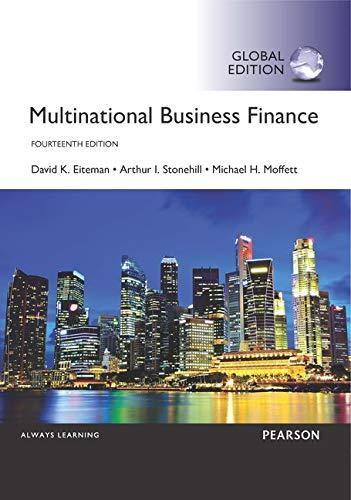At more than 1,500,000bn (some $16,800bn), these savings are considered the worlds biggest pool of investable
Question:
At more than ¥ 1,500,000bn (some $16,800bn), these savings are considered the world’s biggest pool of investable wealth. Most of it is stashed in ordinary Japanese bank accounts; a surprisingly large amount is kept at home in cash, in tansu savings, named for the traditional wooden cupboards in which people store their possessions. But from the early 2000s, the housewives—often referred to collectively as “Mrs. Watanabe,” a common Japanese surname—began to hunt for higher returns.
—“Shopping, Cooking, Cleaning Playing the Yen Carry Trade,” Financial Times, February 21, 2009.
Over the past 20 years, Japanese yen interest rates have remained extremely low by global standards. For years the monetary authorities at the Bank of Japan have worked tirelessly fighting equity market collapses, deflationary pressures, liquidity traps, and economic recession, all by keeping yen-denominated interests rates hovering at around 1% per annum or lower. Combined with a sophisticated financial industry of size and depth, these low interest rates have spawned an international financial speculation termed the yen carry trade.
In the textbooks, this trading strategy is categorized more formally, as uncovered interest arbitrage (UIA). It is a fairly simple speculative position: borrow money where it is cheap and invest it in a different currency market with higher interest returns. The only real trick is to time the market correctly so that when the currency in the highyield market is converted back to the original currency, the exchange rate has either stayed the same or moved in favor of the speculator. “In favor of” means that the high-yielding currency has strengthened against the borrowed currency.
And as Shakespeare stated, “ay, there’s the rub.”
Yen Availability But why the focus on Japan? Aren’t there other major currency markets in which interest rates are periodically low?
Japan and the Japanese yen turn out to have a number of uniquely attractive characteristics to investors and speculators pursuing carry trade activities.
First, Japan has consistently demonstrated one of the world’s highest savings rates for decades. This means that an enormous pool of funds has accumulated in the hands of private savers, savers who are traditionally very conservative.
Those funds, whether stuffed in the mattress or placed in savings accounts, earn little in return. (In fact, given the extremely low interest rates offered, there is little effective difference between the mattress and the bank.)
A second factor facilitating the yen carry trade is the sheer size and sophistication of the Japanese financial sector.
Not only is the Japanese economy one of the largest industrial economies in the world, it is one that has grown and developed with a strong international component. One only has to consider the size and global reach of Toyota or Sony to understand the established and developed infrastructure surrounding business and international.........
Mini-Case Questions 1. Why are interest rates so low in the traditional core markets of USD and EUR?
2. What makes this “emerging market carry trade” so different from traditional forms of uncovered interest arbitrage?
3. Why are many investors shorting the dollar and the euro?
Step by Step Answer:

Multinational Business Finance
ISBN: 9781292097879
14th Global Edition
Authors: David Eiteman, Arthur Stonehill, Michael Moffett





